
Arquivo para November, 2015
The three weeks of COP 21
The three weeks of the opening of the Paris conference, already held the Pre-COP, attended by about 70 countries and chaired by Manuel Pulgar Vidal – Minister of Peru’s environment and president of COP20, the previous conference.
attended by about 70 countries and chaired by Manuel Pulgar Vidal – Minister of Peru’s environment and president of COP20, the previous conference.
On the agenda were four central themes: the ambition of the agreement, its equity, the concrete actions to be taken before 2020 and the financing to be mobilized after 2020.
The French Minister of Foreign Affairs and International Development, Laurent Fabius, who is the president of cop21, showed the press the main objectives of this preparatory ministerial meeting.
Laurent Fabius said: “” We have had to the pre-COP an important step before Paris, but we are more than ever and mobilize the task that remains is considerable, “summed up in the press conference.
Brazil although the has a bold proposal for contribution in INDC (Intended Nationally Determined Contribution , the acronym in English), which would be 43% (the official website of the event registers 37%) involve illegal deforestation, reforesting 12 million hectares the recovery of 15 million degraded pastures and integration of 5 million hectares of crops, livestock and forests.
But we have in Brazil an extremely dirty matrix (hydroelectric being privatized and expensive nuclear power plants already tried to hang), and goals here are not serious, see the goals of economy and respect for labor achievements
World forum on the Internet in Brazil
Few people know, but began 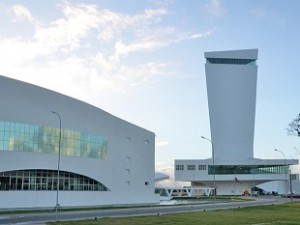 yesterday in Sydney, in northeastern Brazil, a forum on Internet governance sponsored by the UN.
yesterday in Sydney, in northeastern Brazil, a forum on Internet governance sponsored by the UN.
The democratization of access to internet as well as the global control over the electronic network, are key to economic development, the opening of the Lenni Montie event, quoted the UN Secretary General Ban Ki-Moon: I call on all our partners to intensify efforts to promote accessibility, fair price, education and equality, investing in infrastructure and building an open Internet.”
The brazilian president Dilma was not at the event, worried about the protest of strike of truck drivers, but recorded a video which highlighted the importance of supervision “of the central functions of the Internet.”
The forum set up in 2006 by the UN, will last until Friday, and develops the theme “Internet governance Evolution: Empowering sustainable development”.
The organizers of the event, held in the modern João Pessoa Convention Center (photo) expect the capital of Paraiba should receive about three thousand people from 130 countries.
Myanmar tries to democracy
Myanmar held elections on Sunday, and although it has 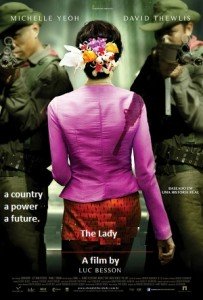 made elections in 1990, when elections ensued a blow that made the opposition react without violence and that after there was a long democratic resistance to the present day, which was recorded in the film The Lady (Beyond Freedom), the real life of Aung San Suu Kyi, filmed in 2012.
made elections in 1990, when elections ensued a blow that made the opposition react without violence and that after there was a long democratic resistance to the present day, which was recorded in the film The Lady (Beyond Freedom), the real life of Aung San Suu Kyi, filmed in 2012.
The Nobel Peace Prize winner Aung San Suu Kyi is expected to win a majority of seats in Parliament eligible. But it needs more than 67% of the votes to be able to form a government, since there is another 25% of seats are reserved for representatives of the army.
Participation should be around 80% of elections, ie, over 30 million voters voted.
The National League for Democracy (NLD) Aung San Suu Kyi is expected to win a majority of seats eligible in parliament, but needs more than 67% of the votes to be able to form a government, since there is another 25% of places are reserved for Army representatives. These should support the Party of the Union Solidarity and Development, successor of the military junta that ruled the country (renamed Myanmar) since 1962, and which came to power in 2011.
Suu Kyi, 70, is barred by the constitution to be elected president and succeed the former general Thein Sein, to have foreign children.
The opposition has already said that if you can most will be the power behind the new president.
25% of unelected MPs also prevent any constitutional changes without the support of the military
Copyright Street photos
I had a friend with seized smartphone and after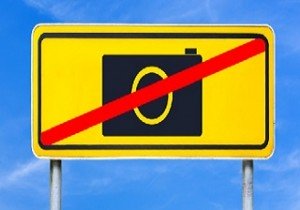 undergoing a humiliation at the police station, thinking that it was sexy photos or something, had his phone confiscated and the girl who found herself offended by his image rights sued.
undergoing a humiliation at the police station, thinking that it was sexy photos or something, had his phone confiscated and the girl who found herself offended by his image rights sued.
The subject is intriguing and thought the matter in LibraryCruch site that referred to a public discussion on the subject on the site that made a series of questions related to the copyright of a G + community called Street Focus, including the photographer Jack Reznichi and lawyer Defense Ed Greenberg, who discussed the law SB 79 Arkansas, “the Personal Rights Protection Act,” about how they are treated by police photographers in public spaces.
The two authors of the original article that appeared in Copright Zone, recognize the importance of copyrighting the images, how to deal with model releases, and more!
The authors describe in ThisWeekInPhoto four scenarios:
Scenario 1) – Shooter takes a walk through the zoo, photographing what catches the eye. The wild kids, the tame animals, the monkey house, and the cotton candy.
You can shoot all you can see. But what you can use it for becomes the fodder that photographers argue about endlessly and what lawyers litigate.
Scenario 2) A bride and groom’s first date was at the zoo and they want you to shoot the wedding party there. This is easy. Do not try and go commando. Do not just show up at the zoo and shoot away
It’s an easy phone call to the zoo’s public relations office. You’ll find out exactly what its policy and rules are. You may find out that they love doing photo ops like having twenty people at the zoo doing their wedding photos. There may be a fee or a donation/contribution to the zoo, likely tax deductible, required or suggested. A donation may buy you priceless cooperation beyond your dreams.
Scenario 3) You are a photojournalist with real press credentials. And we mean real and legitimate press credentials, from a real news organization. Not press credentials that came from the back pages of a comic book. You can photograph and use anything in a story that is news worthy or of public interest.
Scenario 4) You have a commercial assignment that needs to be shot at a zoo. Simple. Anything short of a written, comprehensive agreement specifying date, time, location, insurance, etc. signed by the parties will not suffice-period.
Hopefully this information will keep you from messing your shoes in elephant poop.
The veil of ignorance, the theory and the fair
John Rawls asked if it is possible to reach a common understanding  of what is right. His justice is that based on consideration of all be equal and free, market capitalism tipoco and comes to be social.
of what is right. His justice is that based on consideration of all be equal and free, market capitalism tipoco and comes to be social.
Rawls proposed that there is a veil of ignorance over which should be examined relations between the desired society, the Royal Society and the utopia of fair justice.
Rawls explains the veil of ignorance, “Do not know how the various alternatives will affect your particular case and are required to evaluate the principles as only the basis of the general considerations.” (Rawls, 1981, p. 119)
On his three theoretical position did reviews: Jean-Pierre Dupuy, Michael SandeL and Robert Nozick, the first quips the author stating “Rawls is well aware that, most times, is on behalf of the wretched of the Earth that suppress the freedoms and establishes the privileges “(Dupuy, 199, p. 129), which the author mean by this is that” justice too is less justice “(Dupuy, 199, p. 131).
But the veil of ignorance is also valid for Dupuy using the work of Alexis de Tocqueville (From Democracy in America II, XIII): “They destroyed the annoying privileges of some similar, they found the competition all … that’s why the desire equality becomes ever more insatiable as equality is greater. “
Communitarian philosophers like Michael Sanderl and other (Charles Taylor, Michel Walzer, etc.) weave several critical considerations about the theory of Rawls’ fairness with his liberalism’s universal claim, because it says that this presents an abstract conception of the person, noting that we want the collective rights are prevalent on the individual.
Sandel believes that the thought of Rawls fair is earlier and priority over the good, so that justice would be the first virtue, no moral or political value to overlap.
The veil of ignorance presupposes that the parties away all differences and disagreements would be overcome and there would be no plurality.
But Sandel also be willing to move in this direction since for him there would be a priority of conflict and hierarchy of liberty, equality and fraternity, for he considered fundamental values, so there would be a “veil of ignorance”.
Finally Nozick is an advocate of radical liberalism, or liberarianismo, building a minimal state, the most viable for him, with limited functions for the protection of individual rights, property and safety of citizens.
Nozick wrote “The duty not to interfere in other people’s choice of domain is all that any society should (coercively) demand; higher levels of ethics, involving positive benevolence “(Nozick 2011, p. 280), but reveals and even writes that this would represent a” personal ideal “that would be the choice of each, so there is also a veil of ignorance way of building this ideal personnel.
Heidegger wrote about the “unveiling”, a way in which you need some social or personal construction according to which we draw the veil of our ignorance and walked to a fairer society without this process those who vociferously against “theories” are ignorant and fanaticism and contributes little or nothing to the necessary transformations.
Pages in portuguese (or Spanish) editions.
DUPUY, Jean-Pierre. Éthique et philosophie de l’action, France: Ellipses, 1999.
HEIDEGGER, Martin. Country path conversations. USA: Indiana University Press, 2010.
NOZICK, Robert. Anarchy, State, Utopia. UK: Cambridge Press, 2011.
RAWLS, John. A Theory of Justice. USA, 1971.
SANDEL, M. Liberalism and the Limits of Justice. Cambridge, UK New York: Cambridge University Press. 1998
Internet of Things in practice
Three solutions demonstrate how to use in practice the second IoT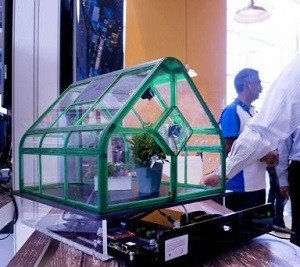 (Internet of Things) Gateways Solutions, publican in the IDGNOW online magazine.
(Internet of Things) Gateways Solutions, publican in the IDGNOW online magazine.
The first is the automation climates in homes, Automated Greenhouse Climate Control, built using multiple systems, depends on the minimum of human intervention, the system called Edge Analytics allows the climate control of a fully autonomous greenhouse allowing maximum convert both for plants, like animals and people, the conversation between the computers systems is made from results of Cloud Analytic and communication through Secure API, aiming to maximize production gain and comfort with monitoring and adjusting indoor climate, decreasing in the case of production costs.
The second is being presented today at the Transport fair Telematics & Fleet Management, which is software installed on trucks which makes it possible in addition to monitoring and position of the vehicle, perform real-time diagnostics of machine condition and can warn the driver and provide maintenance preventive vehicle, equipment Secure API is responsible for collecting, exchanging and sharing data of truck fleet with the center.
The third is a system for smart homes, called Yoga Smart Home, which connects to almost anything: Security detectors wired or wireless, cameras, thermometers, sockets and intelligent lights, entertainment systems, locks and appliances, enabling monitoring of devices from connecting to the internet.
The electric car batteries evolve
The lithium ions are those that feed many mobile devices, but use this technology in automobiles has proved difficult, and the current batteries in electric car have little autonomy (80 to 100 km only).
devices, but use this technology in automobiles has proved difficult, and the current batteries in electric car have little autonomy (80 to 100 km only).
Now researchers at the University of Cambridge are researching a kind of battery called lithium-air or lithium-oxygen, which can provide 10 times more energy, and even sufficient power to compare with gasoline, but it still involves some problems practical.
Now researchers at Cambridge University say they have patented a technology that overcomes some of the main obstacles, according to Clare Grey, project researcher and chemistry professor at the University of Cambridge, now “a significant achievement” of his team already has progress towards high capacity “as we take efficiency to numbers that compete with the current lithium-ion technology.”
With an efficiency of up to 93%, and does so using a different chemical from that used in previous attempts: employing lithium hydroxide (LiOH) in place of lithium peroxide (Li2O2), and also using carbon electrode in the base of the graphene and “additives that alter the chemical reactions at work on the battery, making it more stable and more efficient,” said the researcher.
The result is published in the journal Science.
Sensor artificial tact
Among the various wearable technology (announced with the next ‘wave’), 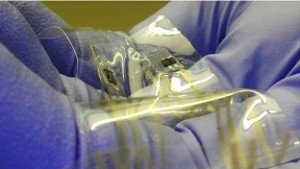 is the interesting work on an “artificial” feel, published in the jornal Science.
is the interesting work on an “artificial” feel, published in the jornal Science.
Second Zhenan Bao the researcher, flexible type of sensor produces a pulse pattern which is immediately recognized by the nervous system, while initially placed hand, this feature enables be used in other parts of the body.
The researcher said: “With plastic materials, we and other researchers in this area had already succeeded in producing touch-sensitive sensors – but the electrical signal coming out of these sensors was not the right format to be interpreted by the brain”.
Other models of computer processing needed to produce the sensation of “touch”, as this produces the pulses directly.
The use of plastic makes the flexible material, and the sensors can be useful in other wearable technology equipment, as stated, “The sensors are very thin and flexible, and are also elastic Then you could mount a sensor on your skin and use. it does to detect vital signs such as heart rate and blood pressure. ”
Just below this layer of “skin” for a printed electronic circuit that functions as an oscillator, which transforms the varying current in a series of impulses. With more pressure and more current, the rate of pulses rises.
200 years of George Boole
Born November 2, 1815, Algebra which created was instrumental in the birth of digital logic (0 and 1, or F=false and V=True), and later at MIT, Vannevar Bush suggested to Claude Shannon who was to become one of the foundations of modern digital computing .
the birth of digital logic (0 and 1, or F=false and V=True), and later at MIT, Vannevar Bush suggested to Claude Shannon who was to become one of the foundations of modern digital computing .
The development of Boole became one of the important mathematical schools, which would influence the philosopher Bertrand Russerl, who wrote; “Pure mathematics was discovered by Boole in his work ‘Laws of Thought’ ‘which was published in 1850.
Although this is a mistake, because the thought does not move for binary laws, Yes and No, as there is perhaps the power and an endless variety of possibilities, Boole later did important work called invariant (or calculus of variations) , which influenced the Theory of Relativity of Albert Einstein.
In 1838, he published a pamphlet called The Mathematical Analysis of Logic, which influenced De Morgan who made a number of simplifications to make the laws of Algebra Boole more simple and easy to be “adopted” in mechanical, electromechanical processes (relays that have emerged more afternoon) and all digital devices that have emerged from these “laws”.
Although it has already died with great respect, it was Whitehead and Russell work Principia Mathematica (1910-1913) who convinced mathematicians that symbolic logic should receive your serious attention.

